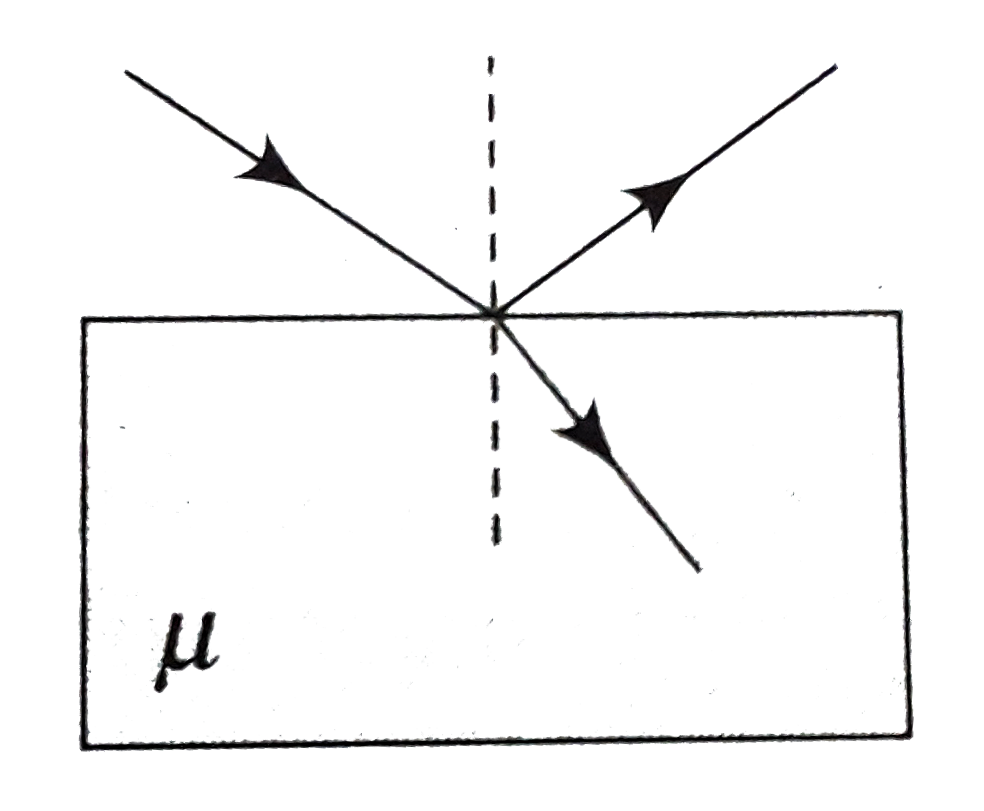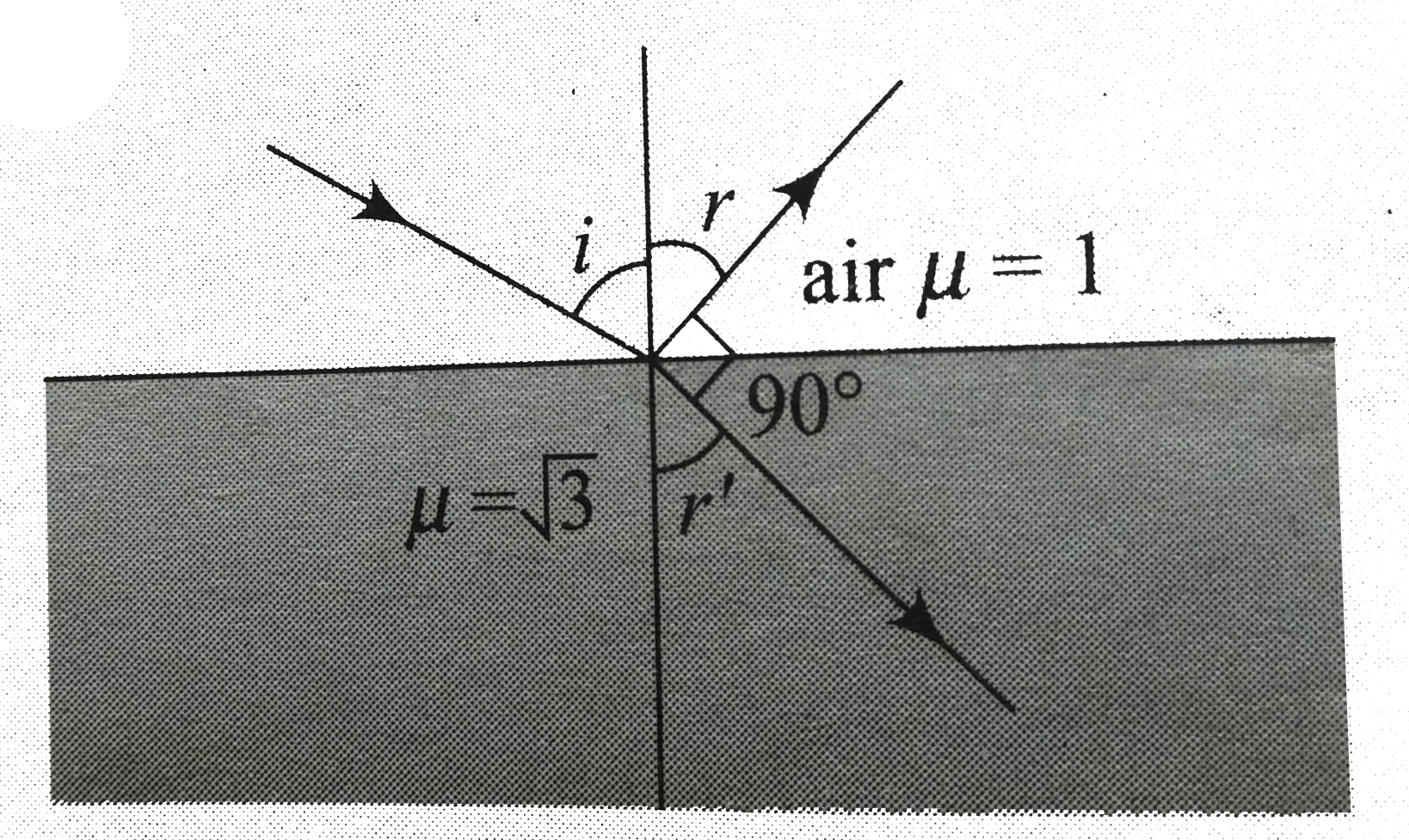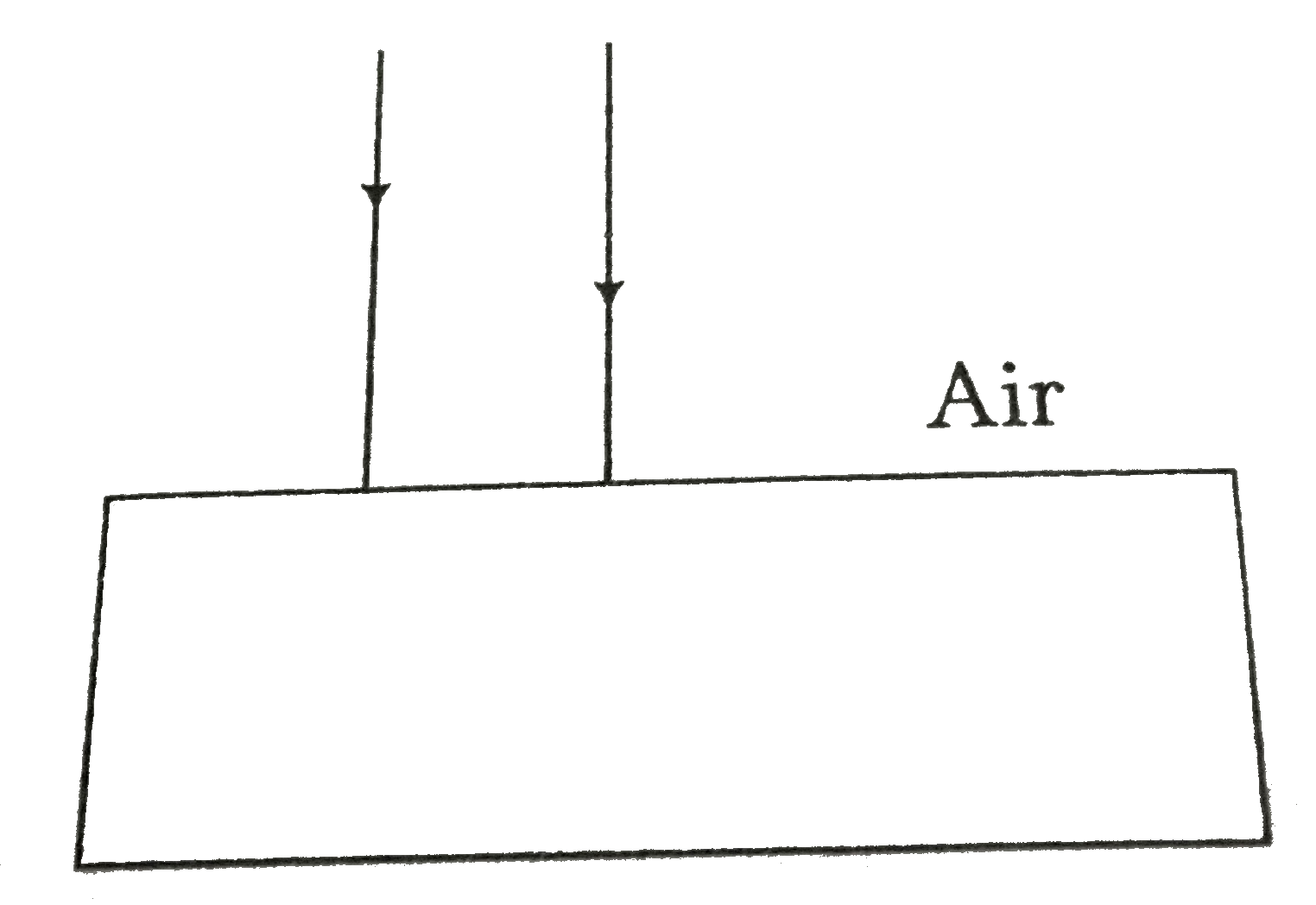A light ray is incident on a glass slab, it is partially reflected and partially transmitted. Then the reflected ray is
completely polarised and highly intense.
partially polarised and poolry intense.
partially polarised and highly intense.
completely polarised and poorly intense.
To solve the problem, we need to analyze the behavior of a light ray when it encounters a glass slab. Here's a step-by-step breakdown of the solution:
Step 1: Understand the Incident Ray
A light ray strikes the surface of a glass slab. At this point, we need to consider the properties of light and how it interacts with different mediums.
Hint: Remember that when light travels from one medium to another, it can be reflected, transmitted, or absorbed.
Step 2: Reflection and Transmission
When the light ray hits the glass slab, it is partially reflected and partially transmitted. This means that some of the light bounces back into the air (reflected ray), while some of it passes through the glass (transmitted ray).
Hint: Think about the law of reflection and how it applies at the boundary between two different mediums.
Step 3: Polarization of the Reflected Ray
The reflected ray is not fully polarized but is partially polarized. This is a key point because the degree of polarization depends on the angle of incidence and the nature of the reflecting surface.
Hint: Recall that light can become polarized upon reflection, especially at certain angles (Brewster's angle).
Step 4: Intensity of the Reflected Ray
Since the light ray is partially reflected, the intensity of the reflected ray will be less than that of the incident ray. This means that the reflected ray has reduced intensity.
Hint: Consider how energy conservation applies here; the total energy must be conserved between the reflected and transmitted rays.
Conclusion
Based on the analysis, we conclude that the reflected ray is partially polarized and has reduced intensity.
Final Answer
The reflected ray is partially polarized and has reduced intensity.
---
A light ray strikes the surface of a glass slab. At this point, we need to consider the properties of light and how it interacts with different mediums.
When the light ray hits the glass slab, it is partially reflected and partially transmitted. This means that some of the light bounces back into the air (reflected ray), while some of it passes through the glass (transmitted ray).
The reflected ray is not fully polarized but is partially polarized. This is a key point because the degree of polarization depends on the angle of incidence and the nature of the reflecting surface.
Since the light ray is partially reflected, the intensity of the reflected ray will be less than that of the incident ray. This means that the reflected ray has reduced intensity.
Based on the analysis, we conclude that the reflected ray is partially polarized and has reduced intensity.
The reflected ray is partially polarized and has reduced intensity.
Similar Questions
Statement I: A light ray is incident on a glass slab. Some portion of it is reflected and some is refracted. Refracted and reflected rays are always perpendicular to each other.
Statement II: Angle of incidence is equal to angle of reflection.

View SolutionA beam of light is partially reflected and partially refracted from a surface. The angle between reflected and refracted light ray is 90∘. If the angle of refraction is 30∘, the angle of incidence is
View Solution
Knowledge Check
A ray of light in incident on a glass plate at an angle of 60∘. What is the refractive index of glass if the reflected and refracted rays are perpendicular to each other?
A12B√32C32D√3
A ray of light is incident on a transparent glass slab of refractive index √3. If the reflected and refracted rays are mutually perpendicular, what is the angle of incidence?

View SolutionA : When an unpolarised light is incident on a glass plate at Brewster angle, the reflected ray and refracted ray are matually perpendicular.
R : The refractive index of glass is equal to sine of the angle of polarisation.
View SolutionA ray of light-is incident on glass at the polarising angle ip. Find the angle between the reflected and refracted rays.
View SolutionA ray of light is incident on a transparent medium at polarizing angle. What is the angle between the reflected ray and the refracted ray .
View SolutionA light ray is incident normally on a plane mirror.
What is the direction of reflected ray? Show it on the diagram.
View SolutionA parallel beam of light of intensity I is incident on a glass plate. 25% of light is reflected in any reflection by upper surface and 50% of light is reflected by any reflection from lower surface. Rest is refracted The ratio of maximum to minimum intensity in interference region of reflected rays is

View SolutionA light ray is incident at 45∘ on a glass slab. The slab is 3cm thick, and the refractive index of the glass is 1.5. What will the displacement of the ray be as a result of its passage through the slab? At what angle will the ray emerge formn the slab?
View Solution
